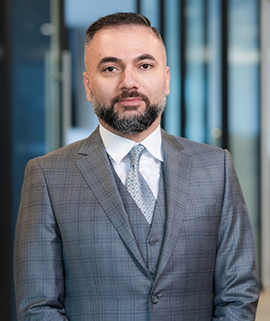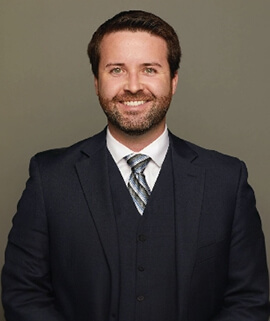Concussions Can Lead to Severe Incidences of Post Concussion Syndrome
Did you suffer a traumatic brain injury in any form of personal injury accident? Did your brain injury cause you to have spatial issues? Have you noticed issues with your vision and the way you perceive things? If you were left dealing with special issues after a traumatic brain injury, you should explore the possibility of taking legal action against the party that negligently contributed to the brain injury that you suffered.
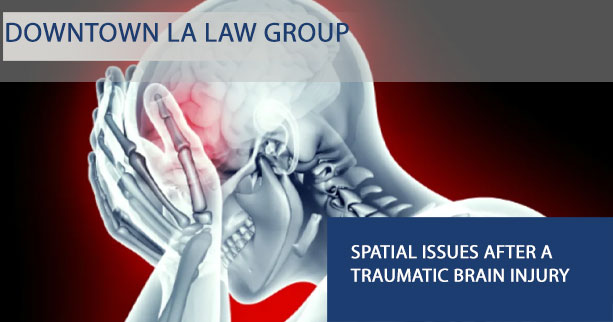 Without a doubt, spatial issues can affect different essential aspects of your life. Spatial issues might even get in the way of your ability to function as you did prior to your brain injury. If you would like to pursue a claim and fight for your rights, do not hesitate to seek legal assistance as soon as possible. You could trust the experts at Downtown L.A. Law Group. Downtown L.A. Law Group is a personal injury law firm with many years of experience handling different types of personal injury claims and helping victims and their families reach the compensation to which they are entitled.
If you would like to discuss your claim with the experts at Downtown L.A. Law Group, do not hesitate to contact us and request to meet with our lawyers. You can be certain that our traumatic brain injury attorneys are ready to represent you and fight for your right to recover the compensation that you deserve. Do not hesitate to contact us today.
Without a doubt, spatial issues can affect different essential aspects of your life. Spatial issues might even get in the way of your ability to function as you did prior to your brain injury. If you would like to pursue a claim and fight for your rights, do not hesitate to seek legal assistance as soon as possible. You could trust the experts at Downtown L.A. Law Group. Downtown L.A. Law Group is a personal injury law firm with many years of experience handling different types of personal injury claims and helping victims and their families reach the compensation to which they are entitled.
If you would like to discuss your claim with the experts at Downtown L.A. Law Group, do not hesitate to contact us and request to meet with our lawyers. You can be certain that our traumatic brain injury attorneys are ready to represent you and fight for your right to recover the compensation that you deserve. Do not hesitate to contact us today.
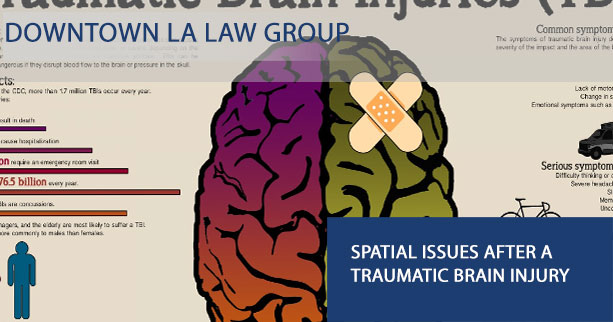 When reading, for example, PTVS can cause individuals to fixate on letters (instead of words). This leads to individuals being unable to release the fixation while they are trying to read. It can create the appearance of words jumping or moving around the page. When attempting to read, people with PTVS are likely to experience blurring and double-vision. The ability to read which many of us take for granted becomes very difficult for those suffering with PTVS.
As previously mentioned PTVS causes individuals to have to work harder to effectively use their vision; this extra effort causes eyestrain, headaches, and fatigue, for example. PTVS can also make it more difficult to function in environments with many visual elements. Supermarkets, department stores, and shopping malls – or any other crowded environments, for example – can prove to be too overwhelming. More specifically, the crowds of people walking (visible in the individuals’ peripheral vision) can create confusion and lead to mental and emotional distress – like anxiety and panic, for example.
Some of the specific symptoms associated with Post Trauma Vision Syndrome include the following: seeing stationary objects move; pulling away from objects when they are moved/brought close to you; problems with visual memory; being unable to find the beginning of lines when reading or losing your place while reading; double vision; headaches; blurred vision; staring (not blinking frequently); dizziness or nausea; difficulties with concentration or attention.
When reading, for example, PTVS can cause individuals to fixate on letters (instead of words). This leads to individuals being unable to release the fixation while they are trying to read. It can create the appearance of words jumping or moving around the page. When attempting to read, people with PTVS are likely to experience blurring and double-vision. The ability to read which many of us take for granted becomes very difficult for those suffering with PTVS.
As previously mentioned PTVS causes individuals to have to work harder to effectively use their vision; this extra effort causes eyestrain, headaches, and fatigue, for example. PTVS can also make it more difficult to function in environments with many visual elements. Supermarkets, department stores, and shopping malls – or any other crowded environments, for example – can prove to be too overwhelming. More specifically, the crowds of people walking (visible in the individuals’ peripheral vision) can create confusion and lead to mental and emotional distress – like anxiety and panic, for example.
Some of the specific symptoms associated with Post Trauma Vision Syndrome include the following: seeing stationary objects move; pulling away from objects when they are moved/brought close to you; problems with visual memory; being unable to find the beginning of lines when reading or losing your place while reading; double vision; headaches; blurred vision; staring (not blinking frequently); dizziness or nausea; difficulties with concentration or attention.
 Without a doubt, spatial issues can affect different essential aspects of your life. Spatial issues might even get in the way of your ability to function as you did prior to your brain injury. If you would like to pursue a claim and fight for your rights, do not hesitate to seek legal assistance as soon as possible. You could trust the experts at Downtown L.A. Law Group. Downtown L.A. Law Group is a personal injury law firm with many years of experience handling different types of personal injury claims and helping victims and their families reach the compensation to which they are entitled.
If you would like to discuss your claim with the experts at Downtown L.A. Law Group, do not hesitate to contact us and request to meet with our lawyers. You can be certain that our traumatic brain injury attorneys are ready to represent you and fight for your right to recover the compensation that you deserve. Do not hesitate to contact us today.
Without a doubt, spatial issues can affect different essential aspects of your life. Spatial issues might even get in the way of your ability to function as you did prior to your brain injury. If you would like to pursue a claim and fight for your rights, do not hesitate to seek legal assistance as soon as possible. You could trust the experts at Downtown L.A. Law Group. Downtown L.A. Law Group is a personal injury law firm with many years of experience handling different types of personal injury claims and helping victims and their families reach the compensation to which they are entitled.
If you would like to discuss your claim with the experts at Downtown L.A. Law Group, do not hesitate to contact us and request to meet with our lawyers. You can be certain that our traumatic brain injury attorneys are ready to represent you and fight for your right to recover the compensation that you deserve. Do not hesitate to contact us today.
What is a Traumatic Brain Injury?
A traumatic brain injury (TBI) can happen during any sort of personal injury accident. Essentially, traumatic brain injuries occur when an individual receives excessive force to the head. Concussions (which are fairly common) are the mildest forms of brain injuries – with the appropriate follow-up care, concussions could result in no permanent damage. However, moderate to severe brain injuries could cause significant and permanent damage that affects nearly every aspect of life.Call (855) 339-8879 to set up a free, no obligation consultation to find out if you have a case.
Traumatic Brain Injuries after Elevator Accidents
For most of us, elevators represent a convenient alternative to stairs when it comes to traveling between different floor levels. Many of us might have been momentarily stuck in an elevator at some point in our lives. In fact, some of us might have experienced stalled elevators so many times that we see it at something normal. Unfortunately, issues with elevators surpass the simple stalling that many of us are used to. Elevator cables can snap, causing the elevator to freefall and crash below. Elevator doors in can open even if the elevator isn’t on the correct level yet, causing innocent people to step into empty elevator shafts and fall many floors down. Elevator doors can be defective and suddenly close on innocent and unsuspecting parties. Elevators could travel too fast, causing innocent people to be thrown around inside the elevator. Elevators could be unleveled, causing innocent parties to trip and fall while going in or out of the elevator. In most cases, elevator accidents are caused by a lack of appropriate maintenance. Usually, elevator accidents can result in a variety of severe injuries. Some of the most severe injuries include traumatic brain injuries – which can occur whenever a party receives force to the head. After an elevator accident that resulted in a brain injury, you might notice that you are struggling with things that might have come naturally to you. More specifically, you might notice that you are unable to perform the tasks necessary to do your job. Consider the following examples:- You are a fashion designer. You were once able to visualize designs and put them down on paper. After you suffered a brain injury, you can no longer do this with the same ease that you used to.
- You are an engineer. A significant portion of your job includes reviewing blueprints to ensure that structures are functional and safe. After you suffered a brain injury, you find it next to impossible to review blueprints efficiently.
- You work in security. Your job is to watch many different monitors to identify any suspicious activities and address them appropriately. After your brain injury, you find it difficult to focus. Although you can see the monitors just find, you cannot your vision cannot focus on any suspicious activity as well as before your injury.
- You are an English professor. Most of your tasks revolve around reading and grading student papers, something that was never problematic before your injury. After your injury, you’ve found that it takes much more effort for you to read your student’s papers. In fact, words seem to jump around in the page, and you constantly lose your place when reading.
How Vision is affected by Traumatic Brain Injuries
Many of us consider vision to be the extent of what we can see. However, vision is a complicated process that allows our brains to grasp an understanding and make sense of what we see. Our vision also aids many other systems in the body. Therefore, when our vision is affected due to a brain injury, we will likely encounter a variety of problems. A traumatic brain injury affects vision when parts of the brain that are normally involved in the visual process are damaged. In general, visual problems after a traumatic brain injury could include a decrease in peripheral vision, blurred vision, and double vision. If your vision has been affected after a brain injury, you might that objects might look blurry; it might also take longer to focus your vision (after reading, for example). You might have issues with depth perception or understanding where specific objects are in terms of space. You could also feel as the floor is tilted and might even lean backwards/forwards or to the sides while you walk, stand, or even sit. The changes in your vision could be attributed to syndromes related to the brain injury that you suffered. These syndromes include Post Trauma Vision Syndrome and Visual Midline Shift Syndrome, for example. You could even be experiencing spatial neglect.Understanding Post Trauma Vision Syndrome (PTVS)
Post Traumatic Vision Syndrome (PTVS) occurs when there is an imbalance between the ambient visual process and the focal visual process. PTVS results in the ambient visual process losing the ability to organize visual information spatially, resulting in the individual becoming “focally bound” (fixated on visual information) and having to work harder to successfully use his or her vision. When reading, for example, PTVS can cause individuals to fixate on letters (instead of words). This leads to individuals being unable to release the fixation while they are trying to read. It can create the appearance of words jumping or moving around the page. When attempting to read, people with PTVS are likely to experience blurring and double-vision. The ability to read which many of us take for granted becomes very difficult for those suffering with PTVS.
As previously mentioned PTVS causes individuals to have to work harder to effectively use their vision; this extra effort causes eyestrain, headaches, and fatigue, for example. PTVS can also make it more difficult to function in environments with many visual elements. Supermarkets, department stores, and shopping malls – or any other crowded environments, for example – can prove to be too overwhelming. More specifically, the crowds of people walking (visible in the individuals’ peripheral vision) can create confusion and lead to mental and emotional distress – like anxiety and panic, for example.
Some of the specific symptoms associated with Post Trauma Vision Syndrome include the following: seeing stationary objects move; pulling away from objects when they are moved/brought close to you; problems with visual memory; being unable to find the beginning of lines when reading or losing your place while reading; double vision; headaches; blurred vision; staring (not blinking frequently); dizziness or nausea; difficulties with concentration or attention.
When reading, for example, PTVS can cause individuals to fixate on letters (instead of words). This leads to individuals being unable to release the fixation while they are trying to read. It can create the appearance of words jumping or moving around the page. When attempting to read, people with PTVS are likely to experience blurring and double-vision. The ability to read which many of us take for granted becomes very difficult for those suffering with PTVS.
As previously mentioned PTVS causes individuals to have to work harder to effectively use their vision; this extra effort causes eyestrain, headaches, and fatigue, for example. PTVS can also make it more difficult to function in environments with many visual elements. Supermarkets, department stores, and shopping malls – or any other crowded environments, for example – can prove to be too overwhelming. More specifically, the crowds of people walking (visible in the individuals’ peripheral vision) can create confusion and lead to mental and emotional distress – like anxiety and panic, for example.
Some of the specific symptoms associated with Post Trauma Vision Syndrome include the following: seeing stationary objects move; pulling away from objects when they are moved/brought close to you; problems with visual memory; being unable to find the beginning of lines when reading or losing your place while reading; double vision; headaches; blurred vision; staring (not blinking frequently); dizziness or nausea; difficulties with concentration or attention.
Understanding Visual Midline Shift Syndrome (VMSS)
Were you aware that your visual system also affects other senses as well as your neuromotor system? In a typical person, the ambient visual system provides the brain with cues that allow the individual to understand the body’s orientation. When the ambient visual system is damaged (after a traumatic brain injury, for example), the brain is not receiving all the visual cues necessary; this results in problems with balance and movement in general. Our ambient visual system makes us aware of the midlines of our bodies, which keep us balanced; however, an impaired visual system after a brain injury can shift our sense of midline. The shift of midline, whether from front to back or side to side, severely distorts our sense of space (and our sense of relation to space) and is called Visual Midline Shift Syndrome (VMSS). VMSS can cause the floor to be perceived as tilted, resulting in people leaning or drifting onto one side during normal walking. VMSS can cause issues with posture (standing and seating posture) as well as problems with muscle stiffness and back pain. Some of the symptoms that individuals with VMSS might experience include the following: back pain; muscle stiffness; poor balance or posture (visibly leaning backward, forward, or to one side) when sitting, standing, or walking; dizziness or nausea; spatial disorientation; drifting to one side when walking; bumping into options when walking.Learn more about your options for compensation by calling (855) 339-8879.
Understanding Spatial Neglect
Spatial neglect is usually regarded as the possible aftermath of a stroke; however, spatial neglect is possible in any person who suffers a traumatic brain injury. Spatial neglect is usually associated with the right side of the brain; therefore, people who are experiencing spatial neglect fail to be aware of anything (objects or people) on their left. Although they can see everything, they tend to only focus on the things on the right. As scenes become more crowded, spatial neglect makes it more difficult for people to focus on visual details on the left. Because people with spatial neglect essentially fail to acknowledge visual details on the left, spatial neglect can affirmatively prevent people from being functional or being independent after their brain injury.Do You Have the Right to Sue for the Complications Caused by Your TBI?
Without a doubt, if you were left suffering PTVS, VMSS, or spatial neglect as a result of a traumatic brain injury, you have likely struggled with many different aspects of your life since your accident. Could you pursue a claim if you suffered a traumatic brain injury that caused you to suffer significant spatial issues? Your right to pursue a claim is based on the fact that someone negligently contributed to the harm that you suffered. Regardless of the specific type of personal injury accident that you suffered, it is likely that your accident was caused by the negligent actions of a party. Parties owe others a specific duty of care; they must identify and address hazards before anyone suffers injuries, and they must not do anything that might harm others. When parties breach their duty of care, they are putting others at risk of suffering harm. When the breach of duty directly causes an accident that results in harm, like a traumatic brain injury, the party that breached his or her duty of care could be held liable. That means that you could pursue a claim. For more information for your right to sue for the spatial issues that you are suffering due to your traumatic brain injury, do not hesitate to contact our law firm as soon as possible.Your Claim is Subject to a Statute of Limitations
Without a doubt, you have the right to pursue a claim if the harm that you suffered is a direct result of the negligent actions of another party. Did you know that you could lose your right to sue? All claims are time-sensitive; they are subject to statutes of limitations. Therefore, there are certain deadlines that apply to claims that determine the specific length of time that claimants have to file. The statute of limitations that applies to claims depends on the specific action that is being pursued. In general, personal injury claims are subject to a two-year statute of limitations. Even though applicable statutes of limitations establish strict deadlines, the specific details of your claim could affect the deadline to which it is subjected. Because the statute of limitations that applies to your claim can vary significantly, it is essential that you discus this key detail with an experienced attorney. If you fail to understand the statute of limitations that applies to your claim, you will likely lose your right to sue.You Could Recover Compensation
If you have the right to sue, you also have the right to recover compensation – that is, once your claim reaches a successful outcome. How much compensation could you be eligible to recover? What type of compensation could you receive? The compensation available for recovery for personal injury claims, including those relating to spatial issues caused by brain injuries, is always associated with the specific details of the claim (and the harm suffered has affected and will continue to affect different aspects of your life). Although every claim is different and not all claimants will be eligible to recover the same types of compensation, some of the types of compensation that could be available include the following:- Medical expenses
- Lost income
- Pain and suffering
- Loss of consortium
- Punitive damages
Seek Legal Assistance Today
Did you experience spatial issues after you suffered a traumatic brain injury? If your traumatic brain injury resulted in spatial issues, you should explore the possibility of pursuing a claim against the party that contributed to your brain injury and the spatial issues with which you were left. Do you have the right to pursue a claim? Do you have the right to recover monetary compensation? For all the information that you need regarding your right to take legal action for the harm that you suffered, do not hesitate to seek legal assistance as soon as possible. You could trust the experts at Downtown L.A. Law Group to provide you with all the information that you need to take legal action. Downtown L.A. Law Group is a personal injury law firm with many years of experience handling all sorts of personal injury claims – many of the claims that we handle are associated traumatic brain injuries and other similar injuries. The experts at our law firm have many years of experience handling a variety of claims and representing the rights of all parties affected by personal injury accidents, including those left suffering spatial issues due to traumatic brain injuries. If you are in need of legal assistance, do not hesitate to contact the experts at our law firm. Downtown L.A. Law Group is dedicated to ensuring that all victims of any sort of harm caused by the negligence of other parties have access to the legal representation that they need to eventually recover the compensation that they deserve. To ensure that all victims of personal injury accidents, even those that lead to traumatic brain injuries, have access to our expertise, we offer a variety of free legal services; these services include both free consultations and free second opinions. During our free consultations and free second opinions, our lawyers will be available to answer all your questions and address all your concerns, ensuring that you have the information and the guidance that you need to pursue your claim. Regardless of whether you are starting your claim or looking to redirect your claim, you could be certain that there will always be someone that you could trust at our law firm. To schedule a free consultation or a free second opinion, do not hesitate to contact our law firm at your earliest convenience. Our free legal services are offered through our Zero-Fee guarantee, which allows our clients to contact us without ever having to worry about expensive upfront legal fees. In fact, because our law firm is strictly based on a contingency structure, our clients will never be required to cover any costs until after reaching a successful claim outcome. If you do not reach a successful outcome and recover compensation, you will not be required to pay us anything. To speak to our lawyers and learn more about your right to take action for the spatial issues that resulted from your traumatic brain injury, do not hesitate to contact our law firm today.
By submitting this form, you agree to receive telephone calls and text messages at anytime, which include hours outside of business hours (8:00 am PST – 9:00 pm PST). This is so that we may reach you as soon as possible in order to consult on your potential case.

